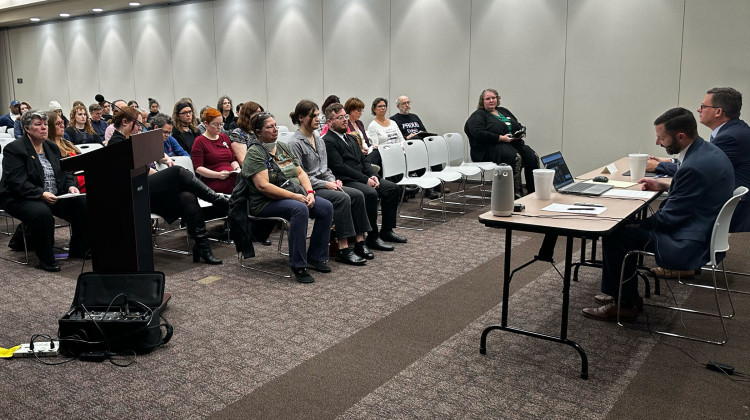
The ACE Pyramid helps visualize how ACEs are related to development of risk factors for disease, and well-being throughout the life course. (Photo courtesy of the Centers For Disease Control and Prevention)
More organizations have adopted Adverse Childhood Experience or ACE scores to assess the health impact of childhood trauma. Some of these experiences are more common for children in Indiana than other states. These include having a parent in prison and witnessing neighborhood violence. Indiana Public Broadcasting’s Jill Sheridan sat down with Indiana Youth Institute President Tami Silverman, to talk about how ACE scores inform care.
Jill Sheridan: Why did you think it was important to highlight this issue?
Tami Silverman: Well we’re hearing more, particularly from educators, saying we know that kids in their classrooms are being impacted. Particularly by parents that are suffering from substance use disorders, mental health and they don’t really know how to respond to those kids and an ACE score helps you understand, for a child, what experiences have they gone through?
Sheridan: You took a look at these ACE scores and compared Indiana with the rest of the nation and why Indiana children might be dealing with these at higher levels.
Silverman: The ones we were most concerned about when we did this analysis was the number of children who had experienced a parental death, that had a parent who served time in jail,that was living with someone who had a problem with drugs or alcohol and had witnessed neighborhood violence or domestic violence. Many kids experience one or two of those, but it’s when you start to combine three or four or five, as they start to multiply that we see a long-term impact for a child as well as their long-term health.
Sheridan: The trauma that a child has gone through during a developmental stage, do you think there is a growing awareness about the real life, long term impact of that?
Silverman: Absolutely. And thankfully we’re hearing a lot more about trauma-informed care and how do we best respond and take into account the whole child and understanding social and emotional needs of kids and they’re all intertwined. It’s really saying if we want our kids to succeed academically, if we want them to be engaged citizens – how do we prepare them for that?
Sheridan: Some children in Indiana may be impacted more than other children?
Silverman: Absolutely. And some of that has to do with responses. So if you are dealing with a substance use disorders, or mental health, if you can’t access care for that – that is going to have a much longer impact. That’s going to increase the severity of that experience for that child, when they are witnessing it with their parent. Understanding that a child’s experience is greatly informed by the environment they live in.
Sheridan: We’re looking at chronic, long-term conditions that some children might be experiencing?
Silverman: Right. And I think that was one of the real ah-ha moments of the Adverse Childhood Experience study when it first came out, and it’s been out for a long time, 20 years. It’s not new, but we’re just starting to incorporate it into our daily practice, the reality that these kids who have a cumulative effect are more likely to have heart attacks, are more likely to abuse drugs themselves as they grow older. They’re more likely to have some of those chronic health conditions, diabetes. They’re more likely to have a stroke, years and years later.
If you think about it, when you also have those positive childhood experiences on the flip side, when you have a mentor that invests and pours energy and time into you, when you have that special teacher or a great school environment, that also sets you up and impacts you for the rest of your life.
Sheridan: So what can we do? What can schools, organizations, anyone do, to really impact this?
Silverman: You can understand what some of those indicators are, and again, some of them are very acute. If you know that a child has been removed from their home because of an addiction issue that seems like a high attention issue and it is. Simultaneously, parent divorce is also one of these signs. So when you know of a child that’s in your family or friend group or school community; when they are dealing with one of these issues, lean into them.
 DONATE
DONATE







 Support WFYI. We can't do it without you.
Support WFYI. We can't do it without you.